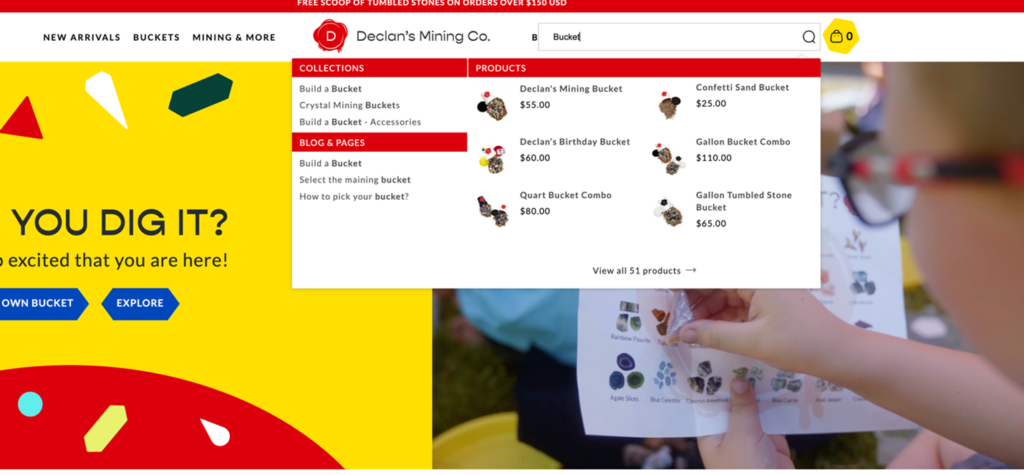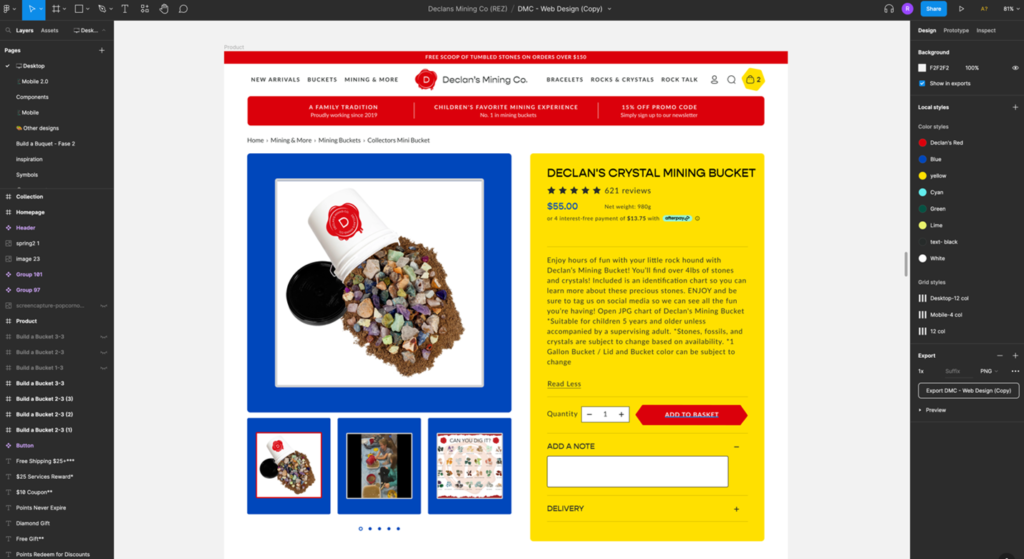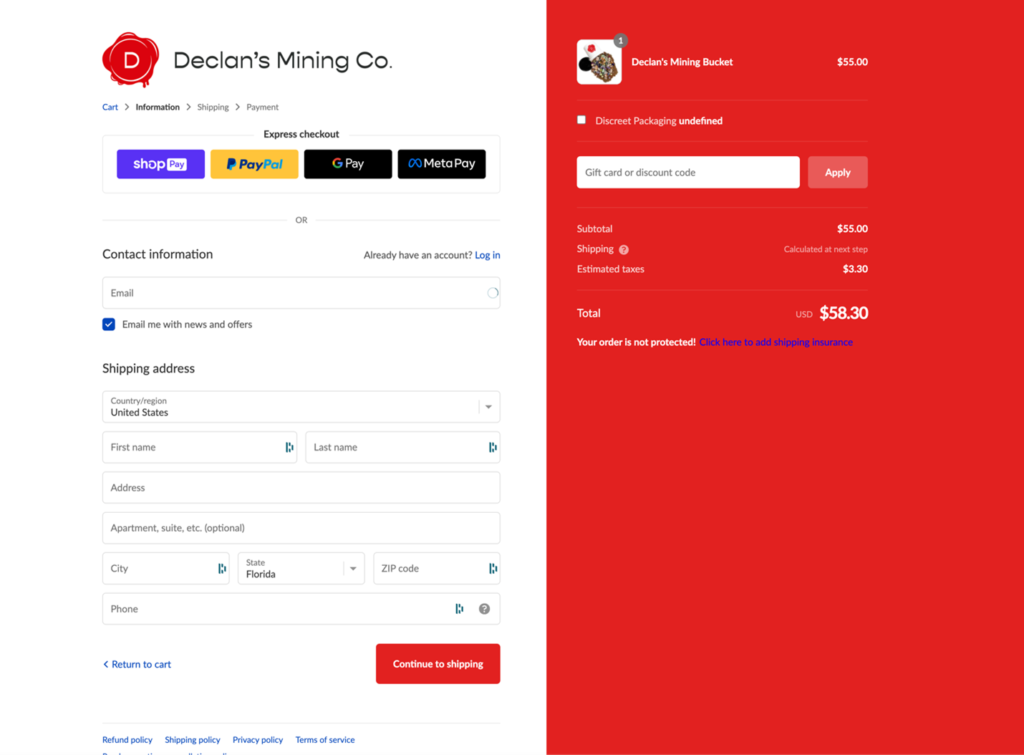Ecommerce has become a vital component in the world of online sales, and ecommerce web design has become increasingly important for businesses to attract and retain customers. A well-designed ecommerce website creates a positive user experience and helps establish a strong brand identity, building trust with potential customers and, ultimately, driving sales.
Recent studies have shown that ecommerce web design is critical to the success of ecommerce businesses. According to Stanford University, 75% of users judge a business’s credibility based on its ecommerce web design. According to Forrester Research, having a well-designed user interface can boost website conversion rates by as much as 200%. This means that ecommerce web design has a significant impact on both user experience and conversions.
In this article, we will provide practical insights and recommendations for businesses looking to leverage ecommerce web design in their marketing strategies. Whether you are just starting your ecommerce business or looking to improve your existing website, these tips will help you create a user-friendly and visually appealing ecommerce web design that drives conversions and builds brand loyalty.
Here’s what to expect:
Tip 1: Prioritize User Experience (UX)
Tip 2: Build Trust with a Professional Appearance
Tip 3: Simplify Product Search and Filtering
Tip 5: Encourage Customer Reviews and Social Proof
Tip 6: Streamline the Checkout Process
Tip 7: Personalize the Shopping Experience
Tip 8: Utilize Clear and Persuasive Call-to-Action (CTA) Elements
Tip 9: Leverage Analytics to Identify and Resolve Pain Points
Tip 10: Optimize for Search Engines (SEO)
Bonus Tip: Work With An Acclaimed Ecommerce Web Designer
Frequently Asked Questions (FAQs)
 User experience is critical for ecommerce web design. These are some suggestions to assist you in prioritizing user experience (UX):
User experience is critical for ecommerce web design. These are some suggestions to assist you in prioritizing user experience (UX):
According to a case study by WpBeginner, simplifying ecommerce web design navigation can increase ecommerce website usability by up to 90%. Incorporating a streamlined navigation system can help users locate what they’re seeking more efficiently and with less difficulty. This can result in less frustration and a better overall user experience.
Mobile ecommerce sales are expected to reach $4.1 trillion by end of 2023, highlighting the importance of mobile-first design. According to a study by Google, 53% of mobile visitors will leave an ecom website page that takes longer than three (3) seconds to load, emphasizing the need for fast loading pages.
On the contrary, slow page load times can lead to high bounce rates and lost sales, so ensure your ecom website loads quickly by optimizing images and code.
 Building trust with potential customers is crucial for ecommerce success. Below are some suggestions to assist you in crafting a professional appearance:
Building trust with potential customers is crucial for ecommerce success. Below are some suggestions to assist you in crafting a professional appearance:
By implementing SSL certificates and ensuring that all website transactions are secure, businesses can build trust with potential customers and improve user experience.
 Simplifying product search and filtering can help to create a positive user experience. Here are some tips to help you simplify product search and filtering:
Simplifying product search and filtering can help to create a positive user experience. Here are some tips to help you simplify product search and filtering:
According to a study by Baymard Institute, filtering is the most important feature on an ecommerce website, with 43% of users finding it important. By offering comprehensive filter options, users can pinpoint the exact products they desire, which enhances their overall experience and boosts the chances of a purchase.
Research has shown that search suggestions can improve search efficiency by up to 40%, highlighting the importance of search autocomplete and suggestions. Implementing these features can help users find what they are looking for quickly and easily, leading to improved user experience and higher conversion rates.

Optimizing product pages can help to increase conversions and sales. Below are a few tips to help you optimize product pages:

Encouraging customer reviews and social proof can help to build trust with potential customers. Below are some tips to help you encourage customer reviews and social proof:
Research has shown that 71% of consumers will share positive experiences with a brand on social media, highlighting the importance of integrating social media sharing into ecommerce websites. Enabling users to easily share products and services on social media platforms can amplify brand exposure and drive more traffic to a business’s website.

Simplifying the checkout process can lower cart abandonment rates and boost sales. Here are a few suggestions to assist you in streamlining the checkout process:
Personalizing the shopping experience can help to increase customer engagement and drive sales. Here are some tips to help you personalize the shopping experience:
In fact, according to a study by Barilliance, personalized product recommendations can increase ecommerce sales by up to 31%. By using customer data to provide tailored product recommendations, businesses can improve user experience and drive sales.
A study by SaleCycle found that remarketing emails have an average open rate of 47.7% and a click-through rate of 18.4%, highlighting the effectiveness of remarketing strategies.
Businesses can use customer data to target users who have abandoned their cart or browsed specific products to improve user engagement and drive sales.
Clear and persuasive call-to-action (CTA) elements are essential for driving conversions. Here are some tips to help you utilize effective CTAs:
Leveraging analytics tools can help you identify pain points on your ecommerce web design and optimize its performance. Some analytics to leverage include:
Heatmap and user session recording tools can provide valuable insights into how users interact with an ecommerce website, highlighting pain points and areas for improvement.
By analyzing this data, businesses can make informed decisions about ecommerce web design and functionality, leading to improved user experience and higher conversion rates.
By conducting audits on a regular basis, businesses can stay ahead of emerging trends and technologies, ensuring that their ecommerce web design remains competitive and effective.
Optimizing for search engines can help to drive organic traffic to your ecommerce website. Below are some suggestions to help you optimize your website for search engines:
By conducting in-depth keyword research and strategically incorporating keywords throughout a website, businesses can enhance their SERP rankings and attract more traffic to their site.
Studies have found that short URLs with targeted keywords rank higher in search engine results, emphasizing the importance of user-friendly URL structures. Creating simple and descriptive URLs can help businesses improve their website’s search engine optimization and make it easier for users/visitors to find what they are looking for.
A study by Search Engine Journal found that websites with rich snippets get 20-30% higher click-through rates, highlighting the importance of incorporating rich snippets and schema markup into ecommerce websites. By providing additional information about their products and services, businesses can boost their search engine rankings and attract more visitors to their website.
As a market leader in ecommerce web design, our team of Digital Gurus team at Rezolutions Design understands the importance of creating visually appealing and user-friendly ecommerce websites. Our expertise in the field has earned us recognition as one of the best ecommerce web designers and developers in Florida by none other than Clutch, a reputable B2B ratings, and reviews platform.
At Rezolutions Design, we believe that ecommerce web design should be more than just aesthetically pleasing. It should also prioritize user experience, simplify product search and filtering, optimize product pages, and streamline the checkout process. By following these best practices, businesses can create a positive online shopping experience for their customers and ultimately drive sales.
Our team here at Rezolutions Design will work closely with you to understand your business’ unique business goals and tailor ecommerce web design solutions to meet those needs. Whether it’s building a new ecommerce web design from scratch or revamping an existing one, our team is dedicated to providing high-quality web design services that meet and exceed client expectations.
In today’s competitive online marketplace, ecommerce web design plays a crucial role in driving sales and building brand loyalty. As we have seen, statistics from reputable sources like Stanford University and Forrester Research have emphasized the importance of ecommerce web design in establishing credibility, improving user experience, and increasing conversions.
Only those businesses that prioritize it are more likely to succeed in today’s competitive marketplace. By following these top ecommerce web design tips outlined in this article and working with an experienced ecommerce web designer like Rezolutions Design, businesses can create a positive online shopping experience for their customers and ultimately drive sales.
There are several ecommerce platforms available, each with its own strengths and weaknesses. Some of the most popular platforms include Shopify, WooCommerce, Magento, and BigCommerce.
The most suitable platform for your business depends on several factors, such as your budget, business size, product complexity, and technical proficiency. When selecting an ecommerce platform, it’s vital to assess aspects like ease of use, customization capabilities, security features, and compatibility with other tools and services.
Improving the loading speed of your ecommerce web design is essential for providing a positive user experience and increasing conversions. Some tips to help you improve your ecommerce web design loading speed include:
Choosing the right color scheme for your online store can help to create a strong brand identity and improve user experience. There are several aspects to take into account when deciding on a color palette, such as:
Socialmedia can be a powerful tool for promoting your ecommerce website and improving your ecommerce web design. These are some top tips to help you use social media to boost your ecommerce web design:
Pop-ups can be effective for ecommerce websites if used appropriately. Below are some suggestions to help you utilize pop-ups in an effective manner:
Sign up to join our weekly newsletter to recive top tips for your business. Youll alway be the first to know when new Ecommerce tips are released.
June 2023 has brought a new revolutionary gadget to the virtual marketplace. Apple has recently made an explicit move toward the VR/AR market. They finally unveiled their latest Vision Pro headgear and technology. It marked a new step in the 3D digital world. The initial venture of America’s Tech-Giant into mixed-reality headsets is perceived as […]
Consider a devoted shopper who has spent several weeks browsing your Shopify store. They’ve at last found the product they’ve been yearning for. Enthusiastically, they place it in their cart, all set to seal the deal. But, just as they’re on the verge of completing the purchase, they hesitate. Maybe the shipping charges seem exorbitant, […]
When creating a website or redesigning an existing one, there are two main options – hire a freelancer or engage with a web agency. Each choice has pros and cons, but making the proper selection will depend heavily on your business’s requirements and budget. With this in mind, it’s essential to weigh the key differences between […]
As many of us can relate, composing product titles and descriptions can be very time-consuming. Primarily when dropshipping vendors only provide the specs of a product with little human touch. If you want your customers to connect with your brand, keep reading as you learn how to use Chat GPT to create product titles and […]
Have you heard about dropshipping in the world of eCommerce? It’s definitely something worth learning about if you’re interested in starting an online store. But what exactly is it? Is it still a viable business model or just a passing fad? Don’t worry, I’m here to give you all the details on dropshipping and how […]
It’s amazing to see how much ecommerce has grown since 2020 due to the economic impact. This is why so many new merchants are on the rise building their new ecommerce stores based on amazing facts such as U.S Ecommerce sales growing 7.7% Year over Year in 2022, reaching $1.03 Trillion. In essence, ecomerce could […]
Sign up to join our weekly newsletter to recive top tips for your business. Youll alway be the first to know when new Ecommerce tips are released.
© 2025 Rezolutions Design


